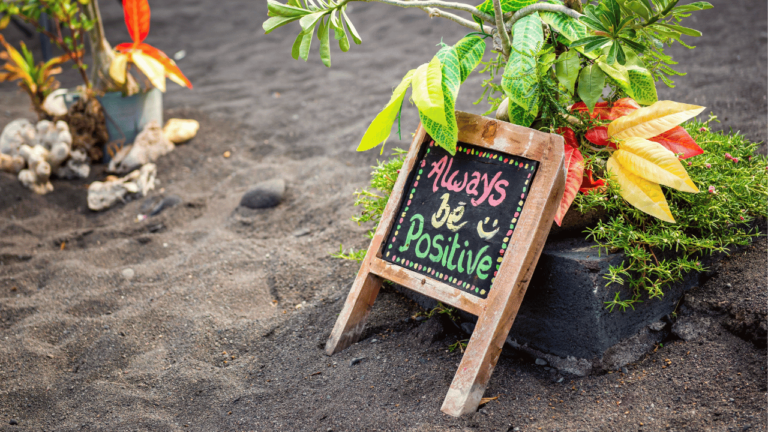In today’s fast world, finding emotional balance is key for our well-being. This article looks at how emotional balance messages can guide us towards inner peace. We’ll see why emotional balance matters and how it helps us deal with life’s ups and downs.
Emotional balance means understanding and managing our feelings. It’s not about hiding them. When we find balance, we feel more at peace and resilient. We also feel more fulfilled. The emotional balance messages we’ll talk about help us live more purposefully.
Key Takeaways
- Emotional balance is key for inner peace and well-being.
- Emotional balance messages inspire self-awareness and resilience.
- Strategies like breathing and positive affirmations help achieve balance.
- Self-compassion and a broad view on life’s challenges help us handle life better.
- Emotional balance boosts resilience, creativity, and satisfaction in life.
The Importance of Emotional Balance
Emotional balance is key to feeling whole and happy. Positive psychology shows that being well means feeling good, being engaged, having strong relationships, finding meaning, and achieving goals. But, true peace comes from accepting both good and bad feelings, as some experts believe.
Emotional Balance Promotes Inner Harmony
Getting better at managing your feelings can make you more aware of yourself and your feelings. It helps you handle tough times with ease and strength. By keeping your mood steady and controlling stress, you can stay positive and feel at peace inside.
- Being balanced with your feelings helps you know and manage your emotions better.
- It makes it easier to keep your mood stable, helping you deal with stress and stay strong.
- People who are emotionally balanced are good at handling stress, which helps them feel good overall.
Working on emotional balance can make you more aware of yourself and your feelings. This leads to a life that’s more meaningful and purposeful. It’s important for doing well in both your personal and work life.
Emotional Balance 50 Messages: A Path to Well-Being
Reaching emotional balance is a journey, not just a goal. We’ve put together 50 powerful messages to guide you. These messages aim to boost self-awareness, control emotions, and help you see life’s ups and downs in a balanced way.
These messages help you build resilience, find peace inside, and handle stress better. They encourage you to see the world with a new emotional lens. By using these messages every day, you’ll learn to deal with tough feelings. You’ll find ways to cope and move towards a more balanced life.
Discover how emotional balance can open doors to a life that’s more fulfilling and focused on well-being.
- Emotional balance comes from within, not from external circumstances.
- You are in control of your emotions—not the other way around.
- Breathe deeply—sometimes, a few deep breaths can restore emotional balance.
- Recognizing your emotions is the first step toward balancing them.
- Let go of what you can’t control to protect your emotional well-being.
- Emotional balance requires awareness—tune into your feelings before they overwhelm you.
- Self-care is essential for maintaining emotional equilibrium.
- Your emotions are valid, but they don’t have to dictate your actions.
- Balance your mind, body, and soul to maintain emotional harmony.
- Practice self-compassion—don’t be too hard on yourself when emotions run high.
- Journaling your emotions can help release tension and regain clarity.
- Make time for joy and laughter—these are important for emotional balance.
- Every emotion has a purpose—listen to what your emotions are telling you.
- Rest is crucial—tiredness can exacerbate emotional instability.
- Set healthy boundaries to protect your emotional energy.
- Embrace your feelings without judgment—they are part of the human experience.
- Emotional balance is a skill, and it can be learned with practice.
- Gratitude shifts your focus from what’s wrong to what’s right.
- Create space for quiet reflection to understand your emotions better.
- Seek balance, not perfection—emotional balance is about managing, not eliminating, emotions.
- Take time to recharge—you can’t pour from an empty cup.
- Mindfulness keeps you grounded, helping you maintain emotional clarity.
- Recognize when you need a break—taking time for yourself is not selfish.
- Your emotions do not define you, but they do provide valuable insights.
- Being present in the moment helps reduce anxiety and emotional turmoil.
- It’s okay to feel sad, angry, or frustrated—what matters is how you respond.
- Develop emotional resilience—this helps you bounce back from life’s challenges.
- Your emotions are temporary, and they will pass.
- Surround yourself with positive people—they can lift your spirits and help you stay balanced.
- Emotional balance comes from acceptance—resisting emotions only intensifies them.
- Simplify your life—decluttering your mind and space can bring emotional relief.
- Listen to your body—it often tells you when emotional imbalance is looming.
- Emotions are your guide, not your master.
- Balance requires a pause—taking a moment to reflect before reacting keeps emotions in check.
- Focus on what brings you peace to cultivate inner harmony.
- Healthy habits lead to emotional balance—exercise, good sleep, and proper nutrition matter.
- Forgive yourself and others—holding onto grudges disturbs the emotional balance.
- Don’t overthink—ruminating on negative thoughts only fuels emotional distress.
- Celebrate small victories—acknowledging progress builds emotional resilience.
- You can feel multiple emotions at once—balance comes from accepting the complexity of your feelings.
- Emotional balance means being kind to yourself, especially during difficult times.
- Focus on progress, not perfection—emotional balance is about steady improvement.
- Release the need to control everything, and you’ll find more emotional peace.
- Silence can be a powerful healer—use quiet time to reconnect with your inner self.
- Your feelings are not facts, and emotional balance comes from recognizing the difference.
- Letting go of unrealistic expectations helps maintain emotional balance.
- Celebrate moments of calm, no matter how small—they are signs of emotional progress.
- Stay adaptable—emotional balance comes from flowing with life’s changes, not resisting them.
- Learn to say “no”—protecting your emotional space is a form of self-respect.
- Balance is a lifelong journey—it’s okay to stumble, as long as you keep moving forward.
Adding these messages to your daily life helps you handle life’s challenges better. You’ll grow in emotional intelligence, stress relief, and inner peace. Start this path to well-being and see how emotional balance can change your life.
Cultivating Inner Harmony Through Self-Awareness 50 messages
Starting on the path to inner harmony means learning about yourself. By paying attention to our thoughts, feelings, and body signals, we can understand ourselves better. This section shares 50 key messages. They encourage us to practice mindfulness and self-reflection for better emotional control, mental strategies, and overall well-being.
Mindfulness and Self-Reflection
Mindfulness helps us stay in the moment and be fully engaged. Through it, we can watch our thoughts and feelings without criticizing them. This leads to clearer thinking and better emotional balance. Self-reflection lets us explore our personal stories, values, and goals. It gives us insights that help us find fulfillment and peace.
By mixing mindfulness and self-reflection into our daily routine, we tap into the power of self-awareness. This helps us handle life’s ups and downs smoothly. We learn to use our emotions wisely and build a deep sense of peace within.
- Inner harmony is a state of balance—emotional, mental, and spiritual peace.
- Self-awareness is the key to inner harmony as it allows you to recognize and address internal conflicts.
- Developing self-awareness begins with mindfulness, paying attention to your thoughts and feelings without judgment.
- Inner harmony is not the absence of challenges, but the ability to remain calm amidst them.
- Self-awareness helps identify emotional triggers, which leads to a more thoughtful response to life’s situations.
- Meditation and reflection are powerful tools for cultivating both inner harmony and self-awareness.
- Inner harmony is deeply personal, as each person’s emotional landscape is unique.
- Journaling can enhance self-awareness by allowing you to observe patterns in your emotions and thoughts.
- The mind-body connection plays a critical role—physical practices like yoga or tai chi can enhance inner harmony.
- Inner harmony leads to better decision-making, as it fosters a clearer mind.
- Acknowledging your imperfections without harsh judgment promotes both self-awareness and inner peace.
- Self-compassion is essential for inner harmony, reducing internal conflicts that arise from self-criticism.
- Recognizing your values and beliefs is a crucial step in self-awareness, helping you live in alignment with your true self.
- Inner harmony does not require external validation, but a deep sense of self-acceptance.
- Self-awareness requires honesty, being willing to face your insecurities and weaknesses.
- Spending time alone allows space for self-reflection, vital for cultivating inner harmony.
- Setting healthy boundaries is a practice of self-awareness, preventing emotional burnout.
- Being present in the moment enhances inner harmony by reducing anxiety over the past or future.
- Inner harmony grows through forgiveness—both of yourself and others.
- Awareness of emotional needs leads to a more balanced and harmonious life.
- Patience with yourself is necessary for the slow process of developing deeper self-awareness.
- Inner harmony thrives in an environment of gratitude, where you focus on life’s positives.
- Accepting your emotions without suppressing them fosters a more peaceful inner world.
- Self-awareness requires continual introspection, as life changes and so do your needs and values.
- Inner harmony influences your relationships by making you more understanding and empathetic.
- Your mindset shapes your reality—fostering a positive, balanced mindset leads to greater inner peace.
- Regular meditation practice increases self-awareness by helping you tune into your thoughts and feelings.
- Creating rituals or routines that support mindfulness can deepen your inner harmony.
- Listening to your intuition is an advanced form of self-awareness that can guide you through life’s challenges.
- Letting go of past hurts is necessary for inner peace and moving forward.
- Self-awareness helps you understand your emotional boundaries, preventing unnecessary emotional strain.
- Recognizing negative thought patterns allows you to replace them with positive, constructive ones.
- Accepting life’s uncertainties contributes to inner harmony, as you release the need for control.
- Balancing work and rest is essential for maintaining both mental clarity and emotional stability.
- Nurturing positive self-talk encourages inner peace and builds self-confidence.
- Spiritual practices, whether religious or secular, can enhance inner harmony by connecting you to something larger than yourself.
- Recognizing your strengths and weaknesses leads to a more authentic sense of self, crucial for inner harmony.
- Embracing change rather than resisting it brings a sense of flow, enhancing internal balance.
- Mindful breathing techniques can quickly calm the mind, fostering immediate inner harmony.
- Recognizing your emotional triggers through self-awareness can help prevent overreaction.
- Practicing humility helps you maintain inner peace by letting go of the ego’s need for validation.
- Inner harmony is a continual practice, not a permanent state—it requires ongoing attention and care.
- Self-awareness helps you identify when your energy is drained, prompting you to take restorative actions.
- Gratitude and appreciation for small moments in life can shift your emotional state toward peace.
- Releasing the need for perfection leads to greater inner harmony by embracing the beauty of imperfection.
- Inner harmony fosters resilience, allowing you to bounce back from life’s challenges with grace.
- Self-awareness allows you to detect and process subtle emotions, preventing them from overwhelming you.
- Cultivating patience with others reflects inner harmony, as you understand that everyone is on their own journey.
- Being aware of your needs allows you to set healthy emotional boundaries and prevent unnecessary stress.
- True self-awareness is about understanding your true desires, leading to a life that feels aligned and fulfilling.
As you grow in self-awareness through mindfulness and self-reflection, the way to inner peace becomes clearer. Welcome this journey with an open heart and a readiness to learn. This will unlock the powerful benefits of knowing yourself.
Embracing Life’s Challenges with Grace 50 top messages
Life is full of ups and downs, trials, and victories. How we handle these challenges shows our emotional balance and inner strength. This section offers 50 powerful messages to help readers develop a mindset for facing life’s uncertainties with grace and balance.
Being resilient means you can bend without breaking. By improving emotional intelligence, we can face tough times with grace. This turns challenges into chances for growth and learning about ourselves.
- Challenges are opportunities for growth—each one brings lessons that help shape your character.
- Grace under pressure is the ability to maintain composure, even when life feels overwhelming.
- Adversity reveals your inner strength, showing you how resilient you truly are.
- Accepting challenges as part of life allows you to respond with flexibility instead of resistance.
- Patience is key—gracefully navigating challenges requires time and persistence.
- Every challenge is a teacher, offering you insights into yourself and the world around you.
- Staying present during tough times helps you maintain focus and avoid feeling overwhelmed by the future.
- Grace is found in how you react, not in the situation itself—responding with calm and wisdom brings clarity.
- Difficulties are temporary, but the lessons and personal growth are lasting.
- Self-compassion during hard times is essential—treat yourself with kindness rather than harsh self-criticism.
- Resilience comes from embracing challenges, rather than avoiding them or wishing them away.
- Perspective matters—seeing challenges as a chance to evolve changes your relationship with them.
- Your attitude determines your experience—approaching life’s hardships with a positive mindset softens their impact.
- Letting go of control and accepting what you cannot change helps you move forward with grace.
- Growth often comes from discomfort—leaning into challenges fosters development.
- Practicing gratitude, even during struggles, can shift your perspective and create a sense of peace.
- Faith in your ability to handle adversity empowers you to face challenges with confidence.
- Every setback is a setup for a comeback—challenges often lead to unexpected success.
- Mindfulness keeps you grounded, helping you face challenges without becoming emotionally overwhelmed.
- Viewing challenges as part of the journey, not as obstacles, brings a sense of acceptance and flow.
- Your mindset is a powerful tool—choosing to see challenges as growth opportunities transform your experience.
- Adversity builds resilience, helping you bounce back stronger with each challenge.
- Facing difficulties with grace involves responding with calm, courage, and a belief in yourself.
- Grace is about maintaining inner peace, regardless of external circumstances.
- Challenges help you discover your true potential, revealing strengths you didn’t know you had.
- Learning from failure rather than fearing it allows you to embrace challenges without hesitation.
- Surrendering to the process of life, including its challenges, helps you flow more smoothly through tough times.
- Trusting in the timing of your life allows you to handle challenges with patience and confidence.
- Your response is your power—while you can’t control every challenge, you can control how you face them.
- Accepting that struggles are a part of life brings a deeper sense of peace and grace.
- Compassion for yourself and others during hard times fosters emotional resilience.
- Each challenge is a step toward personal transformation, guiding you to become your best self.
- Adopting a growth mindset allows you to see challenges as stepping stones rather than roadblocks.
- True strength comes from vulnerability—allowing yourself to feel and process challenges without denying their impact.
- Challenges teach patience, showing that not every solution comes immediately, but through persistence.
- Letting go of perfectionism allows you to approach challenges with grace, knowing that imperfection is part of the process.
- Finding joy in the small victories helps you navigate big challenges with a lighter heart.
- Reframing obstacles as opportunities shifts your energy from frustration to empowerment.
- Grace is found in the ability to remain kind and gentle, even when life is anything but.
- Challenges help build emotional intelligence, enhancing your ability to understand and manage emotions.
- Developing resilience is a lifelong practice, and each challenge you face makes you stronger.
- Being open to learning from difficulties keeps you growing and evolving through every challenge.
- Forgiving yourself for mistakes made during tough times allows you to move forward with grace.
- Accepting that you are not in control of everything brings a sense of relief, allowing you to navigate challenges more smoothly.
- Graceful living involves flexibility, adapting to life’s twists and turns without breaking down.
- Taking responsibility for your actions, even in difficult situations, empowers you to create positive change.
- Grace is about trusting the process, and believing that everything happens for a reason, even when it’s hard to see.
- Surrounding yourself with supportive people helps you maintain grace under pressure by giving you strength.
- Finding meaning in suffering helps transform challenges into moments of growth and transformation.
- Grace is knowing that life’s challenges are shaping you, preparing you for greater things ahead.
Changing how we see things and being kind to ourselves can help us handle life’s hurdles better. This leads to better mental wellbeing and the ability to face tough situations gracefully.
The path of life’s challenges isn’t about being perfect. It’s about learning, growing, and finding inner harmony. Let the grace inside you lead you to a life of resilience, emotional smarts, and stress management.
Emotional Balance 50 Messages: Practical Strategies
Getting emotional balance is more than just knowing how we feel. It’s about using real-life techniques every day. This part shares 50 key messages for emotional balance. They help us find peace, manage our feelings, and grow stronger.
Breathing Exercises and Affirmations
Breathing exercises and positive affirmations are key to these strategies. They are easy but powerful ways to handle stress, improve our mood, and find calm.
- Practice mindfulness daily—be fully present in the moment to reduce emotional overwhelm.
- Identify emotional triggers by reflecting on situations that cause strong reactions.
- Develop a regular meditation routine to calm your mind and gain emotional clarity.
- Take deep, controlled breaths during stressful moments to instantly regulate your emotions.
- Engage in regular physical exercise—movement helps release stress and balance emotions.
- Journaling your thoughts and feelings can help process emotions in a healthy way.
- Recognize and accept all emotions without judgment—both positive and negative emotions have a purpose.
- Set healthy emotional boundaries to protect your well-being in relationships.
- Get adequate sleep, as emotional balance is closely tied to physical rest.
- Practice gratitude daily—focusing on positive aspects of life can shift your emotional state.
- Limit exposure to negative news or social media, which can cause emotional distress.
- Take time for self-care—engage in activities that replenish your energy and emotional reserves.
- Talk to a trusted friend or counsellor when you feel overwhelmed—sharing your feelings provides relief.
- Recognize the early signs of emotional imbalance (e.g., irritability, sadness) and take immediate steps to recalibrate.
- Cultivate emotional intelligence by being aware of your emotions and how they affect others.
- Avoid suppressing your emotions—allow yourself to feel and express them constructively.
- Develop a positive morning routine to set the tone for a balanced emotional day.
- Practice acceptance—understand that you cannot control everything, but you can control your reaction.
- Use affirmations to shift negative self-talk into positive, empowering thoughts.
- Reduce caffeine and sugar intake, which can contribute to mood swings.
- Embrace a balanced diet—what you eat affects your brain chemistry and emotional well-being.
- Spend time in nature—natural environments have a calming effect and can restore emotional balance.
- Use visualization techniques to imagine peaceful and happy moments when feeling emotionally unstable.
- Limit multitasking, which can overwhelm you mentally and lead to emotional imbalance.
- Engage in creative activities like drawing, writing, or music to express emotions and regain balance.
- Practice compassion for yourself and others—this softens emotional tension and promotes inner peace.
- Focus on what you can control, rather than dwelling on things beyond your influence.
- Take short, frequent breaks during work to prevent emotional burnout.
- Laugh more—humour is a great way to release tension and bring joy into your emotional world.
- Practice progressive muscle relaxation to relieve physical tension and help balance your emotions.
- Listen to calming music, which can soothe the mind and improve your emotional state.
- Keep a regular schedule—structure and routine help create a stable emotional environment.
- Forgive yourself and others to let go of past emotional pain and reduce emotional burden.
- Practice empathy—understanding others’ emotions helps you maintain perspective and balance your own.
- Develop problem-solving skills—approaching challenges with a plan can reduce emotional overwhelm.
- Set realistic goals, which prevent unnecessary frustration and emotional imbalance.
- Engage in mindfulness activities like yoga, tai chi, or walking meditation to enhance emotional regulation.
- Release perfectionism—accept that mistakes are part of life and emotional balance comes from self-compassion.
- Celebrate small victories—acknowledging progress helps boost your emotional resilience.
- Take time to disconnect from technology and allow your mind to rest and recharge emotionally.
- Recognize when to step back from emotionally draining situations or people.
- Focus on solutions rather than problems, which shifts your mindset toward emotional empowerment.
- Avoid overcommitting yourself, as doing too much can lead to emotional exhaustion.
- Learn to say no when necessary to protect your emotional energy.
- Spend quality time with loved ones—positive social interactions are a source of emotional balance.
- Acknowledge your emotions as they arise instead of avoiding them, which can cause long-term imbalance.
- Practice self-discipline in your reactions—pause before responding to emotionally charged situations.
- Celebrate quiet time, as solitude can help you recalibrate your emotions.
- Keep a list of things that make you happy and revisit it during emotional lows.
- Seek professional help when needed—therapy or coaching can provide tools to improve emotional balance.
By adding these calm practices to our daily lives, we can actively work on resilience building and mood regulation. This helps us face life’s challenges with ease and inner peace.
Conclusion
This article has shown how emotional balance messages can change lives. It talked about the need for emotional balance and its many benefits. It also gave tips on how to live a more balanced life.
It encouraged readers to focus on self-awareness, mindfulness, and building resilience. These steps can lead to a life that is more fulfilling and peaceful.
Readers are now on a path to emotional balance and peace. They should use the advice from the article to improve their lives. By growing their emotional intelligence, managing stress, and building better relationships, they can fully enjoy the benefits of emotional balance.
This balance helps people handle life’s ups and downs with ease. It helps them make choices that are both right and kind. The article’s advice is a guide for those wanting to understand and use emotional balance in their lives.


























